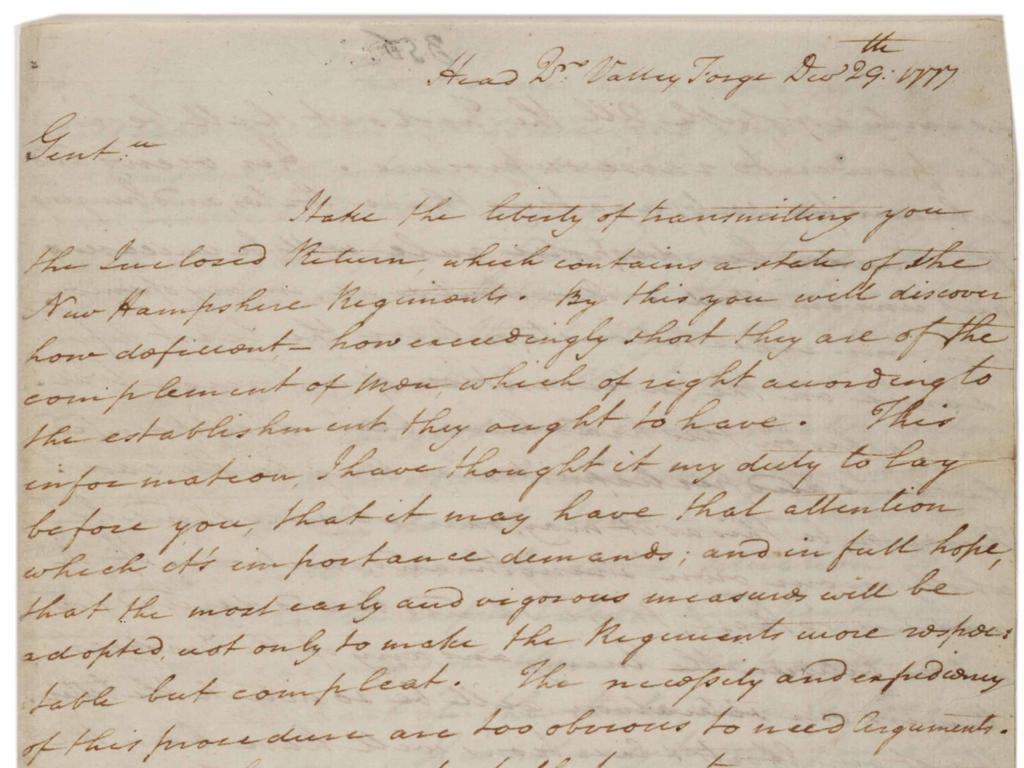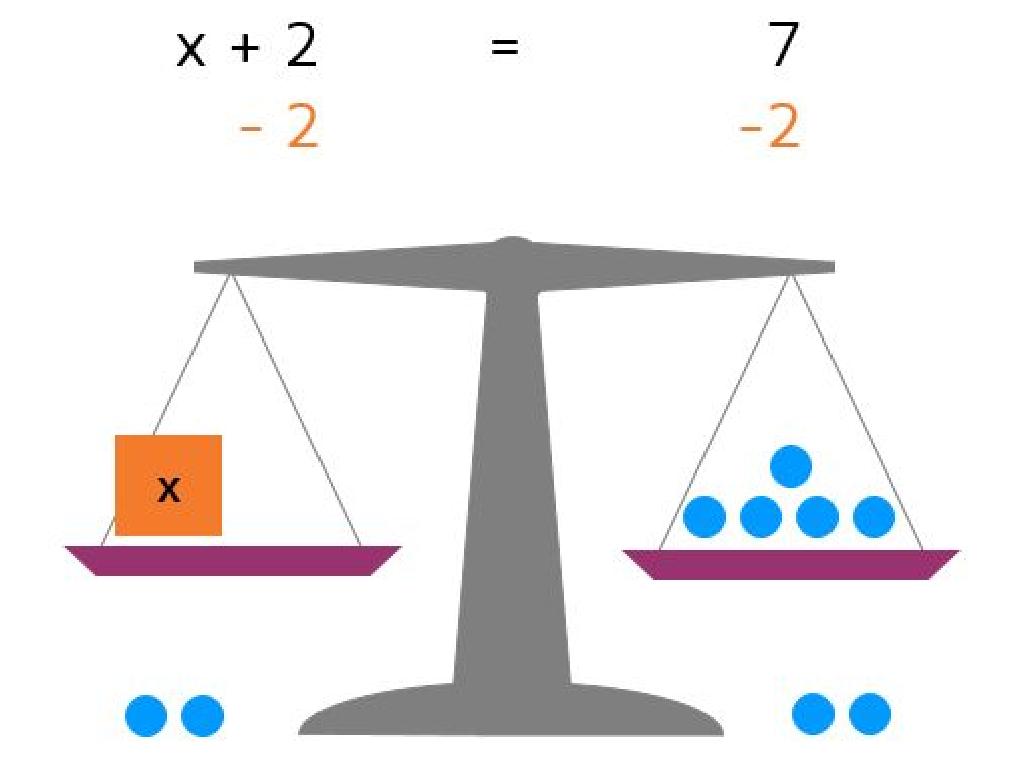Write Division Sentences For Arrays
Subject: Math
Grade: Third grade
Topic: Understand Division
Please LOG IN to download the presentation. Access is available to registered users only.
View More Content
Understanding Division: Arrays
– Learn division with arrays
– Arrays show division as equal groups
– Relation of division & multiplication
– Division is like reverse multiplication
– Become division detectives
– Find the number of items in each group
|
This slide introduces the concept of division using arrays, which are a visual representation of items arranged in rows and columns. Explain to the students that division is essentially breaking down a number into equal parts, much like how multiplication is combining equal groups to form a larger number. Use arrays to demonstrate how to divide a total number of items into equal groups and how to find out how many items are in each group. Encourage the students to think like ‘division detectives’, looking for clues in the arrays that help them solve division problems. Provide examples of simple arrays and work through finding the number of items in each group together.
Understanding Division: Arrays
– Division: Sharing equally
– If you have 12 apples and 4 friends, how do you share?
– Division is opposite of multiplication
– If 3 x 4 = 12 in multiplication, then 12 ÷ 4 = 3 in division.
– Learn key division vocabulary
– Dividend is what you divide. Divisor is how many groups. Quotient is how many in each group.
– Writing division sentences
– Use arrays to write sentences like 12 ÷ 4 = 3.
|
This slide introduces the concept of division to third-grade students by relating it to the idea of sharing equally among friends, which they can easily understand. Emphasize that division is simply the reverse of multiplication, a concept they are already familiar with. Introduce the terms ‘dividend’, ‘divisor’, and ‘quotient’ with clear definitions and examples. Show how to write division sentences using arrays, for example, an array with 12 items arranged in 4 rows can be expressed as 12 ÷ 4 = 3. Encourage students to visualize division as the process of creating equal groups from a larger number and to use arrays as a helpful tool for writing division sentences.
Arrays and Division Sentences
– Arrays show multiplication and division
– Rows and columns form division sentences
– If an array has 3 rows of 4, the division sentence is 12 ÷ 4 = 3
– Each row represents a division group
– Think of each row as a group you divide items into
– Practice with array division sentences
|
This slide introduces the concept of using arrays to understand division. Arrays are a visual representation that can help students see the relationship between multiplication and division. By organizing objects into rows and columns, students can write division sentences based on the number of items in each row or column. For example, if an array has 3 rows with 4 items each, this can be expressed as 12 (total items) divided by 4 (items per row), which equals 3 (rows). Encourage students to create their own arrays with counters or drawings and write corresponding division sentences. This will help solidify their understanding of how division works and how it relates to multiplication.
Writing Division Sentences from Arrays
– Count the groups in the array
– Groups can be rows or columns
– Count items in each group
– Each group should have the same number of items
– Write the division sentence
– Use the formula: Total items ÷ Number of groups = Items per group
– Understand the division result
– The result tells us how many items are in each group
|
This slide introduces the concept of writing division sentences using arrays, which helps students visualize division as an equal distribution into groups. Start by explaining that an array is a set of objects arranged in rows and columns. Have students practice counting the number of groups (rows or columns) and the number of items in each group. Then, guide them to write a division sentence representing the total number of items divided by the number of groups to find out how many items are in each group. Use examples like dividing candies into bags or sharing apples among friends to make it relatable. Encourage students to solve a few problems on their own or in pairs to solidify their understanding.
Let’s Practice Division with Arrays!
– Count total items in the array
– Determine the number of rows
– Write the division sentence
– If we have 15 items in 3 rows, our division sentence is 15 ÷ 3 = 5
– Understand the division concept
– Division breaks a set into equal parts
|
This slide is designed for a collaborative classroom activity to help students understand division through the use of arrays. Start by having the students look at an array and count the total number of items. Then, ask them to identify how many rows or columns there are. With this information, guide them to write the division sentence that represents the array (e.g., if there are 15 items arranged in 3 rows, the division sentence is 15 ÷ 3 = 5). Emphasize that division is about splitting things into equal parts. For the activity, provide different arrays for students to practice with, and encourage them to explain their thinking process. Possible activities include using manipulatives to create their own arrays, drawing arrays on graph paper, or solving prepared array puzzles.
Example Time: Division Sentences for Arrays
– Visualize an array with 15 items
– Array has 3 equal rows
– How many items in each row?
– Write the division sentence
– 15 items divided by 3 rows equals 5 items per row
|
This slide provides a visual example to help students understand how to write division sentences for arrays. Start by showing them an array of 15 items arranged into 3 equal rows. Ask the students to count the total number of items and the number of rows. Then, guide them to understand that if we want to find out how many items are in each row, we divide the total number of items by the number of rows. The division sentence for this array is 15 ÷ 3 = 5, which means there are 5 items in each row. Encourage the students to draw their own arrays and write corresponding division sentences as practice.
Your Turn to Solve: Division Sentences for Arrays
– Write your own division sentences
– Count the items in each array
– How many rows and how many in each row?
– Share your sentences with classmates
– Practice makes perfect!
– The more you practice, the better you’ll get!
|
This slide is an interactive class activity where students will apply their understanding of division and arrays. Encourage them to look at the arrays provided and write division sentences that correspond to the number of items in each array. Remind them to count the number of rows and the number of items in each row to form their sentences correctly. After they have written their sentences, ask them to share with the class to foster a collaborative learning environment. Provide guidance and positive feedback as they work through the activity. Possible activities could include dividing objects into equal groups, using counters to create arrays, or drawing their own arrays on paper.
Class Activity: Array Builders!
– Build arrays with objects in groups
– Write division sentences for arrays
– If you have 12 counters and make 4 rows, your division sentence is 12 ÷ 4 = 3
– Present arrays and division sentences
– Discuss array structures with class
|
This interactive class activity is designed to help students understand division through the use of arrays. Divide the class into small groups and provide them with a variety of objects like counters, blocks, or other small items. Each group will create their own arrays with these objects. Once the arrays are built, students will write division sentences that correspond to their arrays, such as the number of items divided by the number of rows or columns to find how many items are in each row or column. Afterward, groups will present their arrays and explain their division sentences to the rest of the class. This will help students visualize division and understand how it can be represented in a real-world context. Encourage discussion about different array structures and how they relate to division sentences. Possible variations for different groups could include using different numbers of objects or arranging them in different row/column configurations to see how the division sentences change.
Becoming Division Masters!
– Congratulations, division detectives!
– Mastered writing division sentences
– Arrays help us organize objects into rows and columns to see division visually.
– Practice makes perfect
– Aim to be division masters
|
This slide is a celebratory conclusion to reinforce the students’ achievement in learning how to write division sentences for arrays. It’s important to acknowledge their effort and encourage them to continue practicing. Remind them that mastery comes with practice and that they are well on their way to becoming division masters. Offer praise and motivate them to keep practicing with different arrays. You can suggest that they create their own arrays at home using toys or other objects to further their understanding and application of division in a fun and interactive way.






